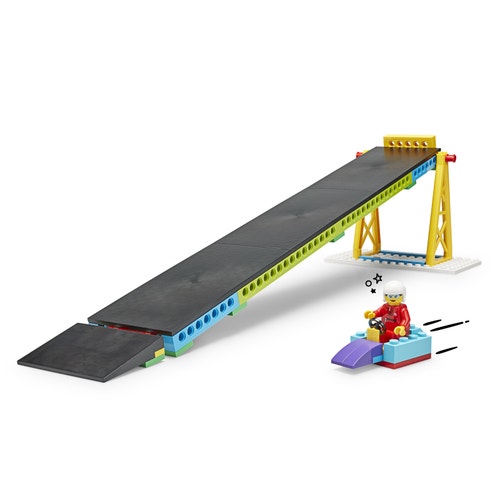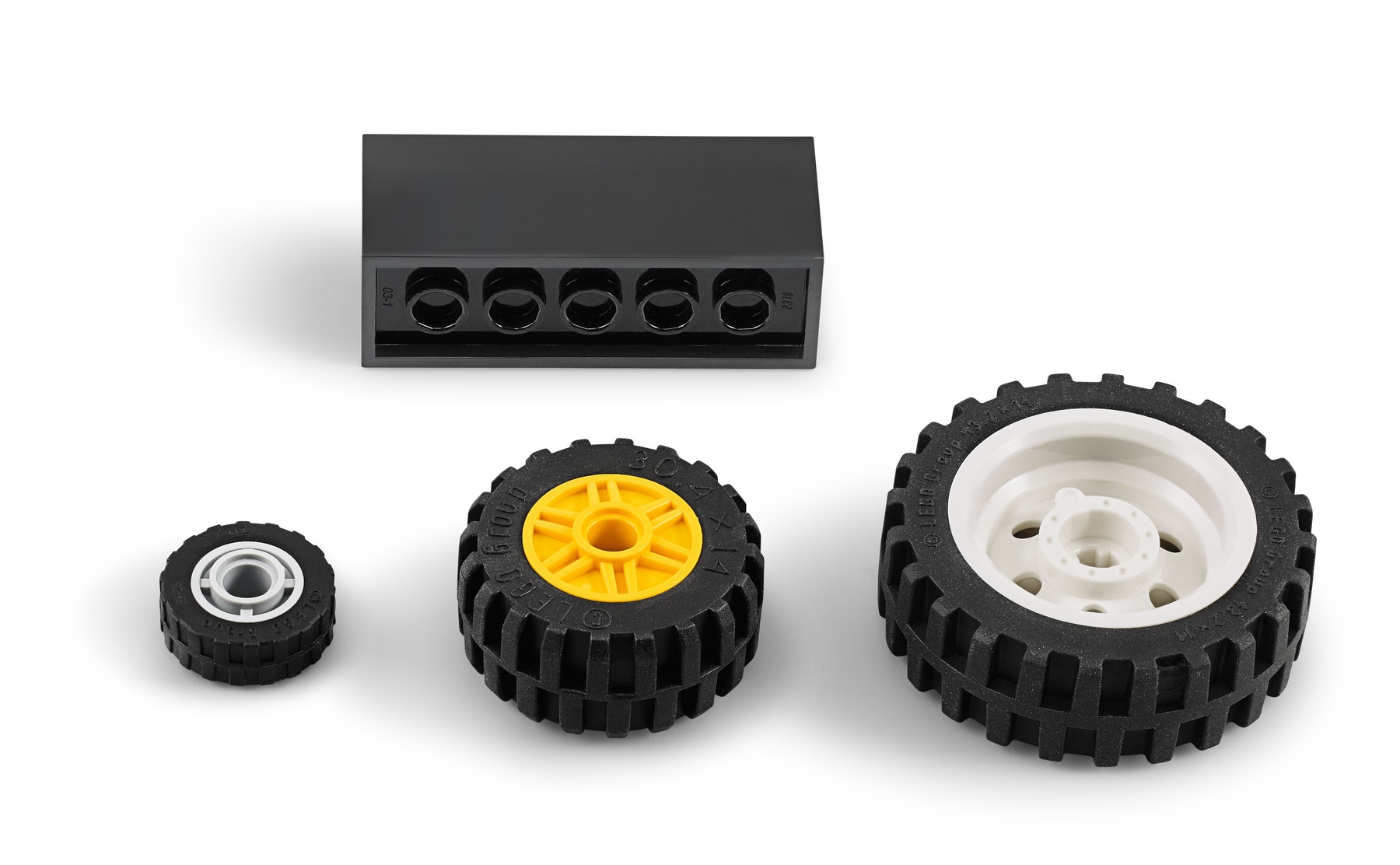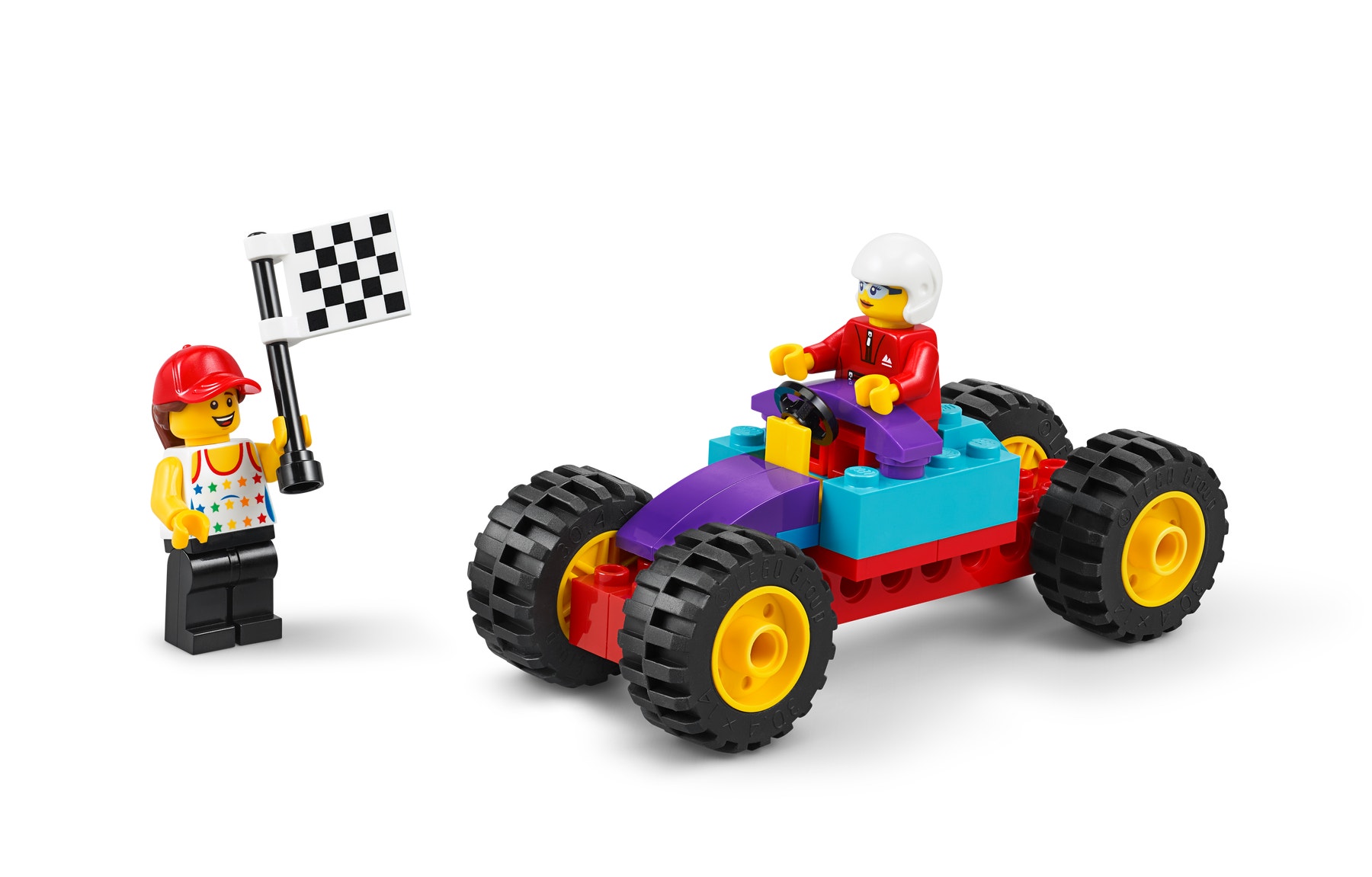Gravity Car Derby
Build your car, find a hill, and off you go! Remember to stay safe out there.

Prepare
- Review the online pupil material. Use a projector to share this material with your pupils during the lesson.
- Make sure that you have covered balanced and unbalanced forces in an earlier lesson.
- Consider the abilities and backgrounds of all your pupils. Differentiate the lesson to make it accessible to everyone. See the Differentiation section below for suggestions.
Engage
(Whole Class, 5 Minutes)
- Watch the pupil video here or access it via the online pupil material.

- Facilitate a quick discussion about the forces that are at work in a downhill go-cart or soapbox car race.
- Ask questions like these:
- What is a soapbox car race? (It is a downhill car race using a car without an engine.)
- Have you watched one on TV?
- Which force makes the car roll down the hill? (Gravity)
- Which force makes the car slow down? Friction
- What do you think gives winning cars a competitive advantage?
- Tell the pupils that they are going to build a ramp and a gravity-powered car, and then experiment to recognise a pattern in the car's motion.
Explore
(Small Groups, 25 Minutes)
- Have the pupils work in pairs to build the Gravity Car Derby model. Tell them to take turns, one partner searching for the bricks while the other builds, switching roles after each step has been done.
- You can find building help in the Tips section below.
Experiment 1:
- Have the pupils place the car chassis without wheels at the top of the ramp, let it go and observe what happens (they might need to give it a little push).
Experiment 2:
- Now ask the pupils to design and build their own simple car model.
- Instruct them to:
- Include a safety device to keep the Minifigure driver in the slippery seat. You can’t win the race if you fall out before the finish line!
- Use a brick to mark where they predict their car will stop after they let it go from the top of the ramp, measure the predicted distance and record it on their Student Worksheets.
- Measure the actual distance it travelled and mark it on their Student Worksheets (Teacher Support – Additional Resources).
- Encourage them to experiment with different wheel sizes, the weighted brick, and any other variables that they can think of to find out what will make their car travel the farthest.

Explain
(Whole Class, 5 Minutes)
- Gather your pupils together to review and discuss what they have learned.
- Ask questions like these:
- How did the car move down the ramp without wheels? (It slid down the ramp at a constant speed, which was controlled by the friction between the car and the ramp.)
- Sometimes, the driver falls out of the car when it suddenly stops. Why does the driver keep moving even when the car has stopped? (This force is called ‘inertia’. It can be explained by Newton's first law of motion, which states that an object in motion will stay in motion in the same direction and speed until other forces act upon it.)
- What difference did it make when you attached larger wheels to your car? (less rolling resistance friction, heavier car/more mass)
Elaborate
(Whole Class, 10 minutes)
- Allow the pupils to continue building and experimenting for another 5 minutes to find out whose car goes the farthest and why.
- If time permits, ask them to try adding the weighted brick to their cars. Have them predict how far the car will travel, recording their predictions and results on their Student Worksheets.
- Allow time for the pupils to disassemble their models, sort the bricks back into the trays and tidy up their workstations.
Evaluate
(Ongoing Throughout the Lesson)
- Ask guiding questions to encourage them to ‘think aloud’ and explain their thought processes and reasoning in the problem-solving decisions they have made when building their models.
Observation Checklist
- Measure your pupils’ proficiency in describing the effects of balanced and unbalanced forces on the motion of the gravity-powered car.
- Establish a scale that suits your needs. For example:
- Requires additional support
- Can work independently
- Can teach others
Self-Assessment
Have each pupil choose the brick that they feel best represents their performance.
- Green: I think I can understand the effects of balanced and unbalanced forces on the car's motion.
- Blue: I know I can understand the effects of balanced and unbalanced forces on the car's motion.
- Purple: I can provide evidence of the effects of balanced and unbalanced forces on the motion of a gravity-powered car.
Peer Feedback
- In their teams, have the pupils discuss their experiences working together.
- Encourage them to use statements like these:
- I liked it when you…
- I'd like to hear more about how you…

Tips
Model Tips
- Highlight that the building instructions start with the pupils building the ramp with the bricks upside down (pages 88 to 96).
- When the pupils have finished the building instructions, their cars will not have wheels. They should first test their models without wheels to observe the effects of friction and possibly inertia if the Minifigure driver falls out of the car.
- Squeezing the wheels tightly on an axle against a chassis will add friction and slow the car down. Wiggling the wheels to be just a hair looser will make it roll much farther.
Sample Solution

Differentiation
Simplify this lesson by:
- Having your pupils start with getting their cars to travel as far as possible without the Minifigure (encourage them to keep their ideas simple)
Increase the difficulty by:
- Having the pupils remove the small ramp at the base of the larger ramp to see what happens
- If time permits, have them reattach the smaller ramp, raising it into a small jump
- If it’s needed, they can place some bricks on the underside to support it
- Encourage them to redesign their cars to safely ride over the jump and still travel as far as possible.
Extensions
(Note: This will require additional time.)
To incorporate the development of language arts skills, ask your pupils to create a report or a short video describing the effects of balanced and unbalanced forces on the motion of their gravity-powered cars.
ACELY1682
Plan, draft and publish imaginative, informative and persuasive texts demonstrating increasing control over text structures and language features and selecting print,and multimodal elements appropriate to the audience and purpose
Teacher Support
The pupils will:
- Conduct an investigation to collect evidence of the effects of balanced and unbalanced forces on the motion of a gravity-powered car.
- Design, build and test a safe gravity-powered car
- LEGO® Education BricQ Motion Essential Sets (one for every two pupils)
ACSHE083
Scientific knowledge is used to solve problems and inform personal and community decisions
ACSIS086
Identify, plan and apply the elements of scientific investigations to answer questions and solve problems using equipment and materials safely and identifying potential risks
ACELY1682
Plan, draft and publish imaginative, informative and persuasive texts demonstrating increasing control over text structures and language features and selecting print,and multimodal elements appropriate to the audience and purpose




